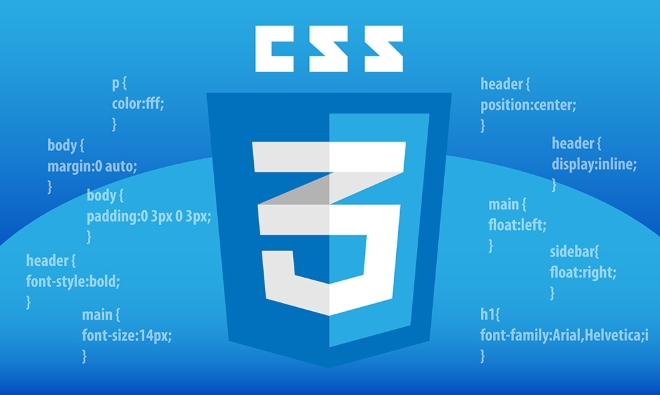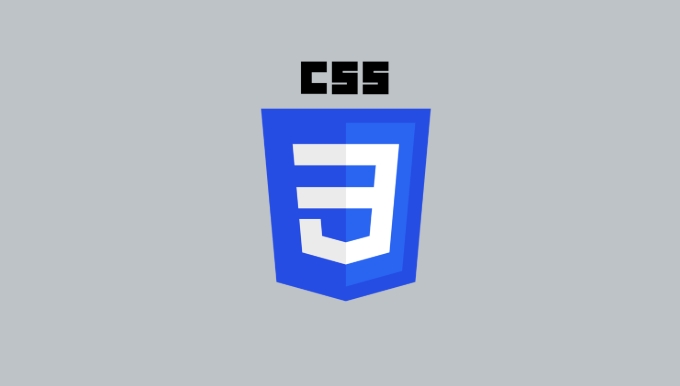Stacking context is created in CSS with specific attributes, which determines the order in which elements stack on the z-axis. Common ways of creating include: 1. Set position to relative, absolute, fixed or sticky and cooperate with z-index; 2. Use opacity to be less than 1; 3. Use transform, filter, will-change and other properties; 4. Set isolation: isolate. Once created, the child elements will be stacked in the environment, and the levels between different stacking contexts cannot be interspersed. The level comparison requires consideration of the hierarchy depth of the stacking context, not just the z-index value. To avoid stacking problems, you should avoid abuse of high z-index, check whether the element is positioned, pay attention to whether the parent element has created a new stacking context, and use developer tools to view the hierarchy. Understanding the nesting and isolation mechanism of stacking context is key.

A stacking context determines the stacking order of elements in the z-axis direction in CSS. In other words, it controls which elements are displayed in front and which are displayed in back. This is not a problem that can be solved simply by z-index, because z-index is only valid within the same stacking context.

How is Stacking context created?
Not all elements are automatically in the same stacking environment. When you use certain CSS properties and values, the browser creates a new stacking context for this element.
Common ways of creating include:

- Set
positiontorelative,absolute,fixed, orsticky, and cooperate withz-index - Use
opacityvalue less than 1 - Use
transform,filter,will-changeand other properties - Set
isolation: isolate
Once an element creates a new stacking context, its child elements are stacked in this new environment without affecting the external hierarchy.
How to compare the levels of different stacking contexts?
The levels between different stacking contexts cannot be interspersed with each other. You can think of it as a "box set box", each box has its own hierarchical relationship inside, but the entire box can only appear as a whole in the parent class.

For example:
Suppose you have two divs, A and B, which belong to different stacking contexts. A's z-index is 1000 and B's 2000, but if the stacking context of the parent container A is located is behind B, it will still be displayed below B even if A's z-index is larger.
Therefore, the levels not only look at the numerical size of z-index, but also the depth of the stacking context level they are in .
How to avoid common stacking problems?
Many times we set z-index but have no effect, or some pop-up windows on the page are blocked, which is usually because we do not understand the mechanism of stacking context.
Some practical suggestions:
- Avoid abuse of high z-index values (such as 9999), which can easily cause confusion.
- If you find that z-index does not work, check if the element is positioned (position is not static).
- Note whether the parent element creates a new stacking context, which affects the hierarchical performance of the child element.
- For complex layouts, you can use the browser developer tools to view the hierarchy structure and observe the stacking context in which each element is located.
Basically that's it. Understanding stacking context does not require rote memorization. The key is to understand how it is nested and isolated layer by layer, and ultimately determine the relationship between elements.
The above is the detailed content of What is a stacking context in CSS. For more information, please follow other related articles on the PHP Chinese website!

Hot AI Tools

Undress AI Tool
Undress images for free

Undresser.AI Undress
AI-powered app for creating realistic nude photos

AI Clothes Remover
Online AI tool for removing clothes from photos.

Clothoff.io
AI clothes remover

Video Face Swap
Swap faces in any video effortlessly with our completely free AI face swap tool!

Hot Article

Hot Tools

Notepad++7.3.1
Easy-to-use and free code editor

SublimeText3 Chinese version
Chinese version, very easy to use

Zend Studio 13.0.1
Powerful PHP integrated development environment

Dreamweaver CS6
Visual web development tools

SublimeText3 Mac version
God-level code editing software (SublimeText3)

Hot Topics
 CSS tutorial for creating loading spinners and animations
Jul 07, 2025 am 12:07 AM
CSS tutorial for creating loading spinners and animations
Jul 07, 2025 am 12:07 AM
There are three ways to create a CSS loading rotator: 1. Use the basic rotator of borders to achieve simple animation through HTML and CSS; 2. Use a custom rotator of multiple points to achieve the jump effect through different delay times; 3. Add a rotator in the button and switch classes through JavaScript to display the loading status. Each approach emphasizes the importance of design details such as color, size, accessibility and performance optimization to enhance the user experience.
 Addressing CSS Browser Compatibility issues and prefixes
Jul 07, 2025 am 01:44 AM
Addressing CSS Browser Compatibility issues and prefixes
Jul 07, 2025 am 01:44 AM
To deal with CSS browser compatibility and prefix issues, you need to understand the differences in browser support and use vendor prefixes reasonably. 1. Understand common problems such as Flexbox and Grid support, position:sticky invalid, and animation performance is different; 2. Check CanIuse confirmation feature support status; 3. Correctly use -webkit-, -moz-, -ms-, -o- and other manufacturer prefixes; 4. It is recommended to use Autoprefixer to automatically add prefixes; 5. Install PostCSS and configure browserslist to specify the target browser; 6. Automatically handle compatibility during construction; 7. Modernizr detection features can be used for old projects; 8. No need to pursue consistency of all browsers,
 What is the difference between display: inline, display: block, and display: inline-block?
Jul 11, 2025 am 03:25 AM
What is the difference between display: inline, display: block, and display: inline-block?
Jul 11, 2025 am 03:25 AM
Themaindifferencesbetweendisplay:inline,block,andinline-blockinHTML/CSSarelayoutbehavior,spaceusage,andstylingcontrol.1.Inlineelementsflowwithtext,don’tstartonnewlines,ignorewidth/height,andonlyapplyhorizontalpadding/margins—idealforinlinetextstyling
 Styling visited links differently with CSS
Jul 11, 2025 am 03:26 AM
Styling visited links differently with CSS
Jul 11, 2025 am 03:26 AM
Setting the style of links you have visited can improve the user experience, especially in content-intensive websites to help users navigate better. 1. Use CSS's: visited pseudo-class to define the style of the visited link, such as color changes; 2. Note that the browser only allows modification of some attributes due to privacy restrictions; 3. The color selection should be coordinated with the overall style to avoid abruptness; 4. The mobile terminal may not display this effect, and it is recommended to combine it with other visual prompts such as icon auxiliary logos.
 Creating custom shapes with css clip-path
Jul 09, 2025 am 01:29 AM
Creating custom shapes with css clip-path
Jul 09, 2025 am 01:29 AM
Use the clip-path attribute of CSS to crop elements into custom shapes, such as triangles, circular notches, polygons, etc., without relying on pictures or SVGs. Its advantages include: 1. Supports a variety of basic shapes such as circle, ellipse, polygon, etc.; 2. Responsive adjustment and adaptable to mobile terminals; 3. Easy to animation, and can be combined with hover or JavaScript to achieve dynamic effects; 4. It does not affect the layout flow, and only crops the display area. Common usages are such as circular clip-path:circle (50pxatcenter) and triangle clip-path:polygon (50%0%, 100 0%, 0 0%). Notice
 What is the CSS Painting API?
Jul 04, 2025 am 02:16 AM
What is the CSS Painting API?
Jul 04, 2025 am 02:16 AM
TheCSSPaintingAPIenablesdynamicimagegenerationinCSSusingJavaScript.1.DeveloperscreateaPaintWorkletclasswithapaint()method.2.TheyregisteritviaregisterPaint().3.ThecustompaintfunctionisthenusedinCSSpropertieslikebackground-image.Thisallowsfordynamicvis
 How to create responsive images using CSS?
Jul 15, 2025 am 01:10 AM
How to create responsive images using CSS?
Jul 15, 2025 am 01:10 AM
To create responsive images using CSS, it can be mainly achieved through the following methods: 1. Use max-width:100% and height:auto to allow the image to adapt to the container width while maintaining the proportion; 2. Use HTML's srcset and sizes attributes to intelligently load the image sources adapted to different screens; 3. Use object-fit and object-position to control image cropping and focus display. Together, these methods ensure that the images are presented clearly and beautifully on different devices.
 What are common CSS browser inconsistencies?
Jul 26, 2025 am 07:04 AM
What are common CSS browser inconsistencies?
Jul 26, 2025 am 07:04 AM
Different browsers have differences in CSS parsing, resulting in inconsistent display effects, mainly including the default style difference, box model calculation method, Flexbox and Grid layout support level, and inconsistent behavior of certain CSS attributes. 1. The default style processing is inconsistent. The solution is to use CSSReset or Normalize.css to unify the initial style; 2. The box model calculation method of the old version of IE is different. It is recommended to use box-sizing:border-box in a unified manner; 3. Flexbox and Grid perform differently in edge cases or in old versions. More tests and use Autoprefixer; 4. Some CSS attribute behaviors are inconsistent. CanIuse must be consulted and downgraded.






